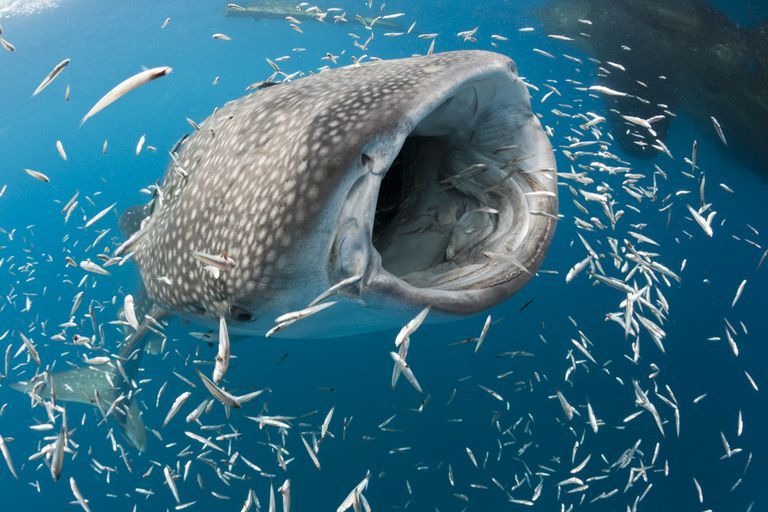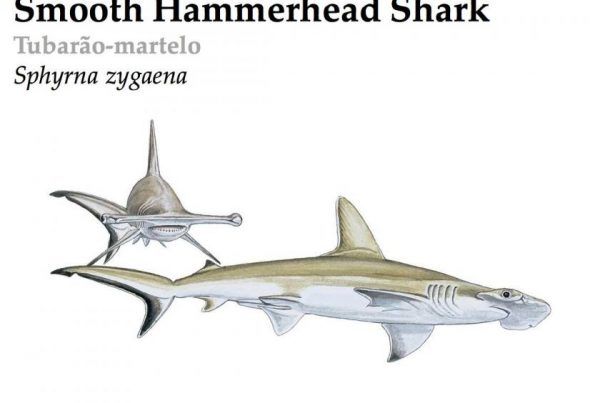
The name « Whale Shark » refers to the fish’s size and its filter feeding strategy that is common also to baleen whales. They are the world’s largest fish and they migrate across entire oceans.
CHARACTERISTICS
Latin name: Rhincodon typus
Order: Orectolobiformes
Family: Rhincodontidae
Length: 12-20 m
Weight: Up to 12 tons
IUCN Status: Vulnerable
DESCRIPTION
- Color: Greenish-Dark grey with lighter horizontal and perpendicular stripes. All the body is cover by white spots.
- Head: Wide and flat
- Dentition: 300 rows of tiny teeth and 20 filtering pads
- Gills: 5 pairs
- Caudal Fin: Heterocercal

HABITAT
Whale Sharks are often observed in open ocean and are solitary fish. In the Azores they can be found during the summer months when water temperatures are at their highest. They spend most of their time close to the surface, and also have been known to occur at depths at around 700 meters.
DIET
Whale Sharks mainly filter-feed on plankton, eggs, small-sized fish, cephalopods and crustaceans. They suck water into their mouth and pump it out through their gills, where particles of food become trapped by bony projections called gill rakers, and are later swallowed into the esophagus.


REPRODUCTION
Whale Sharks reach sexual maturity at around 25 years of age. Whale Sharks converge in particular regions only during the breeding season. They are ovoviviparous. The female develops and hatches her eggs inside herself, before to give birth to live young Whale Sharks (up to 300 individuals), which is around 40-60 cm in length. The gestation can last up to 2 years.



















Your thoughts on this?